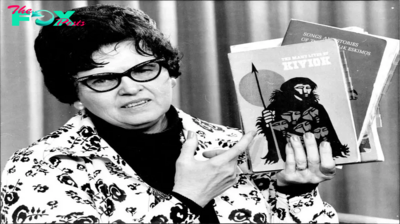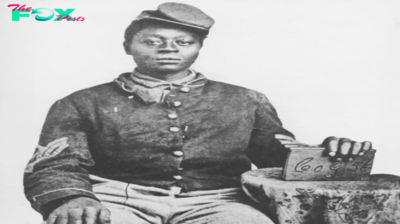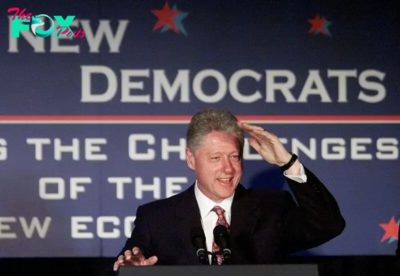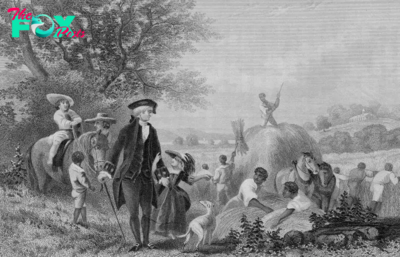History
Online Extremism Is Decades in the Making
For over a decade, an ever-growing array of zealots advocating violence and sedition have been given practically free rein on social media platforms. With sometimes tragic consequences, they easily target some of society’s most vulnerable individuals. The use of social media to radicalize and mobilize for violence was perhaps most clearly evidenced by the arrests of hundreds of people who took part in the Jan. 6, 2021, insurrection — and posted about it.
Many observers have lamented social media’s role in spreading far-right ideas and conspiracy theories, radicalizing scores of Americans. Critics have called for more aggressive regulation. But few have realized that the use of Technology by America’s violent, far-right extremists is nothing new. They have long understood the importance of messaging and the power of the media and Entertainment to spread their ideology.
In the 1980s, in fact, racist, anti-government extremists enthusiastically welcomed the emergence of digital Technology and desktop computing as an especially promising, cheap, and effective means by which to reach a wider constituency. These early steps laid the groundwork for using social media platforms to revolutionize modern terrorism.
Louis Beam, the Aryan Nations’ “ambassador at large” and a former Grand Dragon of the Texas Ku Klux Klan, devised the first large-scale use of Technology to further far-right extremism. A decorated Army veteran, Beam had grown up in a segregated town in Texas and as early as the fourth grade, he was bragging about being a member of the KKK and attempting to recruit classmates.
Read More: Loved Ones of the Buffalo Shooting Victims Want Social Media Platforms Held Responsible
A 1982 conviction on misdemeanor charges of conducting paramilitary exercises on federal land without a permit prompted Beam to resign as Grand Dragon and head to Idaho — where he’d take up residence at the Aryan Nations’ Hayden Lake compound.
There, Beam began plotting the revival of the white supremacist movement he had been forced to abandon in Texas. He rescued from obscurity the concept of clandestine, underground warfare known as “leaderless resistance.” Beam envisioned a strong organization doling out ideas and funding to loosely connected cells, allowing the white power movement to work around law enforcement’s undercover operations.
Writing in a 1983 issue of the Inter-Klan Newsletter and Survival Alert, Beam explained that while any one cell could “be infiltrated, exposed and destroyed,” in the system he envisioned, it would “have no effect on the others.” The only hurdle was figuring out a way for dispersed cells to communicate.
Beam unveiled his solution to this problem at the 1983 Aryan Nations Congress — the most significant and consequential gathering for the American white supremacist movement.
The meeting took place only weeks after a gun battle involving federal law enforcement officers had resulted in the death of Gordon Kahl, a longstanding member of a North Dakota chapter of the Posse Comitatus, an extremist movement that recognized no governmental authority other than the county sheriff. Beam hailed Kahl as a brave warrior — and declared that the movement was “AT WAR.” He called for the movement to “fight and live or we’re going to die soon.” The stakes couldn’t have been higher: “If you don’t help me kill the bastards,” — the agents of the federal government — “you’re going to be required to beg for your child’s life, and the answer will be no.”
At the congress, Beam met with 12 other white power leaders and movement elders to craft a battle plan. The ensuing strategy incorporated his solution to the communication problem: emerging computer networking Technology. Leaderless resistance fused with computerized bulletin board systems (BBSes) brought the movement unparalleled advantages of both real-time and clandestine connectivity, effectively concealing communications from the prying eyes and attentive ears of federal authorities.
This use of technology was revolutionary and cutting age at a time when typewriters were still ubiquitous, fax machines had only recently entered the workplace, and computers were rare and expensive. An Apple IIe starter system, for instance, cost $1,260 in 1983 — about $3,315 today. And modems to transmit BBS data over conventional telephone lines were still mostly inaccessible at the time.
The “Aryan Nations Liberty Net” that Beam created arguably marked the beginning of terrorist exploitation of digital communications for radicalization, recruitment, fundraising, and the planning and execution of operations. It took Beam a year of work to get the system up and running, and even then it was text-only and slow. But in the spring 1984 issue of the Inter-Klan Newsletter & Survival Alert, Beam gushed, “It may very well be that American know-how has provided the technology which will allow those who love this country to save it from an ill deserved fate.”
Computers, as Beam argued, had only been “the domain and possession of governments and large corporations.” But now, his system allowed “any patriot in the country” to tap into the white power movement. Beam imparted helpful buyers’ advice and detailed log-on instructions, along with a phone number and post office box for those who had additional questions.
As a later fundraising appeal proclaimed, the movement saw computing Technology as “our Aryan Technology just as is the printing press, radio, airplane, auto, etc., etc..”

Read More: How the ‘Great Replacement Theory' Has Fueled Racist Violence
The Aryan Nations Liberty Net served many purposes. Primary among them, it sought to tap into a new demographic and build a broader white supremacist constituency by appealing to young computer hackers. It also identified like-minded “patriotic groups” across the country to encourage and facilitate greater networking. Additionally, it was an innovative fundraising mechanism. And, finally and critically, it was an inexpensive, quick, and easy way to spread the movement’s propaganda unhindered by government interference, intrusion, or monitoring.
In perhaps the first warning about far-right exploitation of new online technologies, in 1985, the Anti-Defamation League cautioned that the networks were “[seeking] to spread their hate propaganda among young people, surely the most vulnerable to its influence.” Even “more troubling,” this embrace of computing technology coincided with “an escalation of serious talk” among some far right groups “about the necessity of committing acts of terror.”
The Aryan Nations Liberty net became the forerunner of later networks like Stormfront and Vanguard News Network. These platforms made instantaneous communication possible along with the sharing of enormous digital files with media and graphics. Social media then further enhanced the capacity of the far-right, because it offered even greater immediacy and intimacy. It has also allowed individuals to curate their own community — where dissenting views are dismissed not with erudite and fact-based argumentation, but by a single click of an “unfollow” or “unfriend” button. The result, whether achieved by the most violent radical or most innocent teenager — is the creation of a digital universe where only one’s own worldview is legitimate, with any debate or discourse suppressed, excluded, and thus silenced.

Such echo chambers have proved particularly successful at radicalizing lone actors mobilized by Beam’s leaderless resistance strategy toward violence — his digital disciples have gone from chatrooms to launching attacks in places like Oslo, Norway, and Christchurch, New Zealand. The impact of this revolutionary technology was maybe best summarized by the gunman in the latter case, whose manifesto declared that he developed his beliefs on “The internet, of course. You will not find the truth anywhere else.”
As Beam perhaps envisioned, social media has become the frontline of modern terrorism and counterterrorism. Only a full scale embrace of a wide range of countermeasures—from content moderation to algorithm reforms to digital literacy programming—will enable an effective response to the threat.
Bruce Hoffman is senior fellow for counterterrorism and homeland security at the Council of Foreign Relations and a professor at Georgetown University. Jacob Ware is a research fellow at the Council of Foreign Relations and an adjunct professor at Georgetown University and DeSales University. Together, they are the authors of God, Guns, and Sedition: Far-Right Terrorism in America.
Made by History takes readers beyond the headlines with articles written and edited by professional historians. Learn more about Made by History at TIME here. Opinions expressed do not necessarily reflect the views of TIME editors.
-

 History1d ago
History1d agoHow Celebrities Changed America’s Postpartum Depression Narrative
-

 History2d ago
History2d agoThe Woman Whose Crusade Gave Today’s Book-Banning Moms a Blueprint
-

 History6d ago
History6d agoHow Black Civil War Patriots Should Be Remembered This Veterans Day
-

 History1w ago
History1w agoThe Democratic Party Realignment That Empowered Trump
-

 History1w ago
History1w agoWhy People Should Stop Comparing the U.S. to Weimar Germany
-

 History1w ago
History1w agoFlorida’s History Shows That Crossing Voters on Abortion Has Consequences
-

 History1w ago
History1w agoThe 1994 Campaign that Anticipated Trump’s Immigration Stance
-

 History1w ago
History1w agoThe Kamala Harris ‘Opportunity Agenda for Black Men’ Might Be Good Politics, But History Reveals It Has Flaws



















